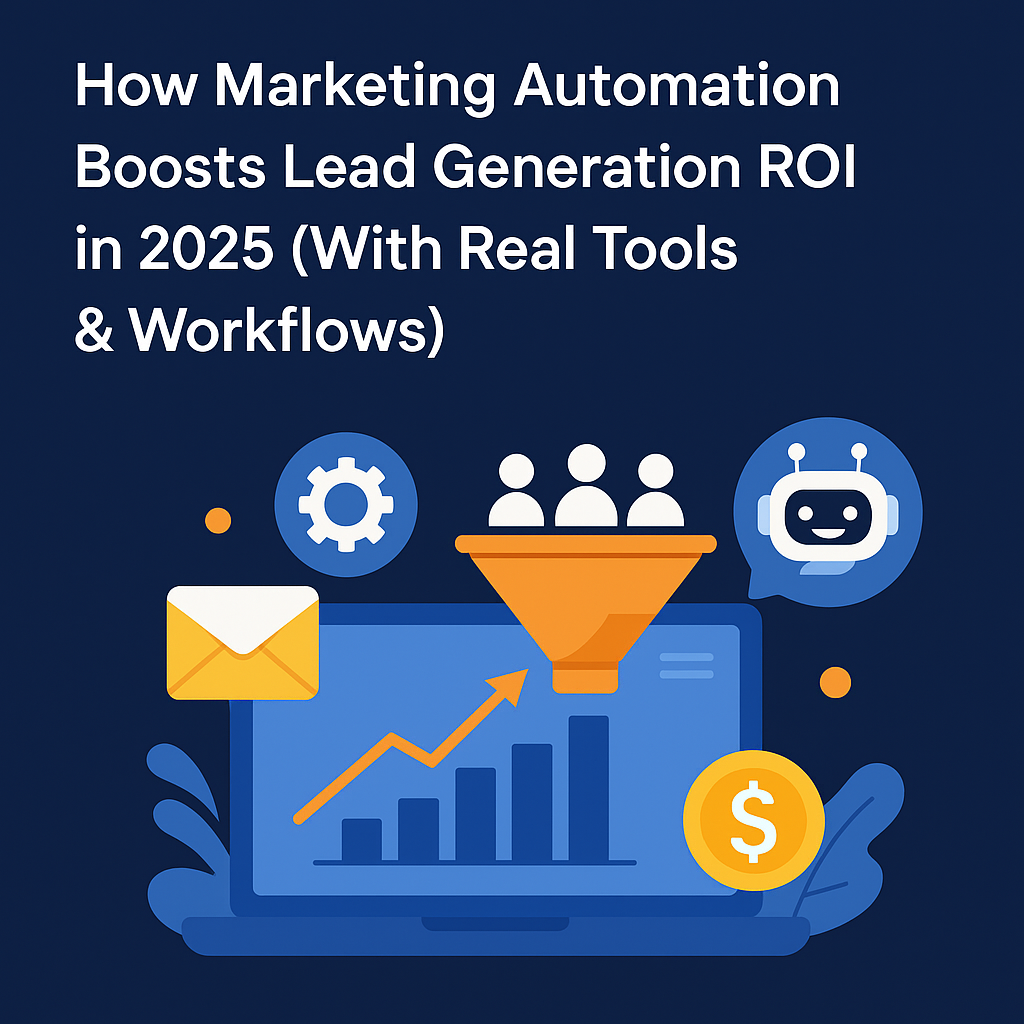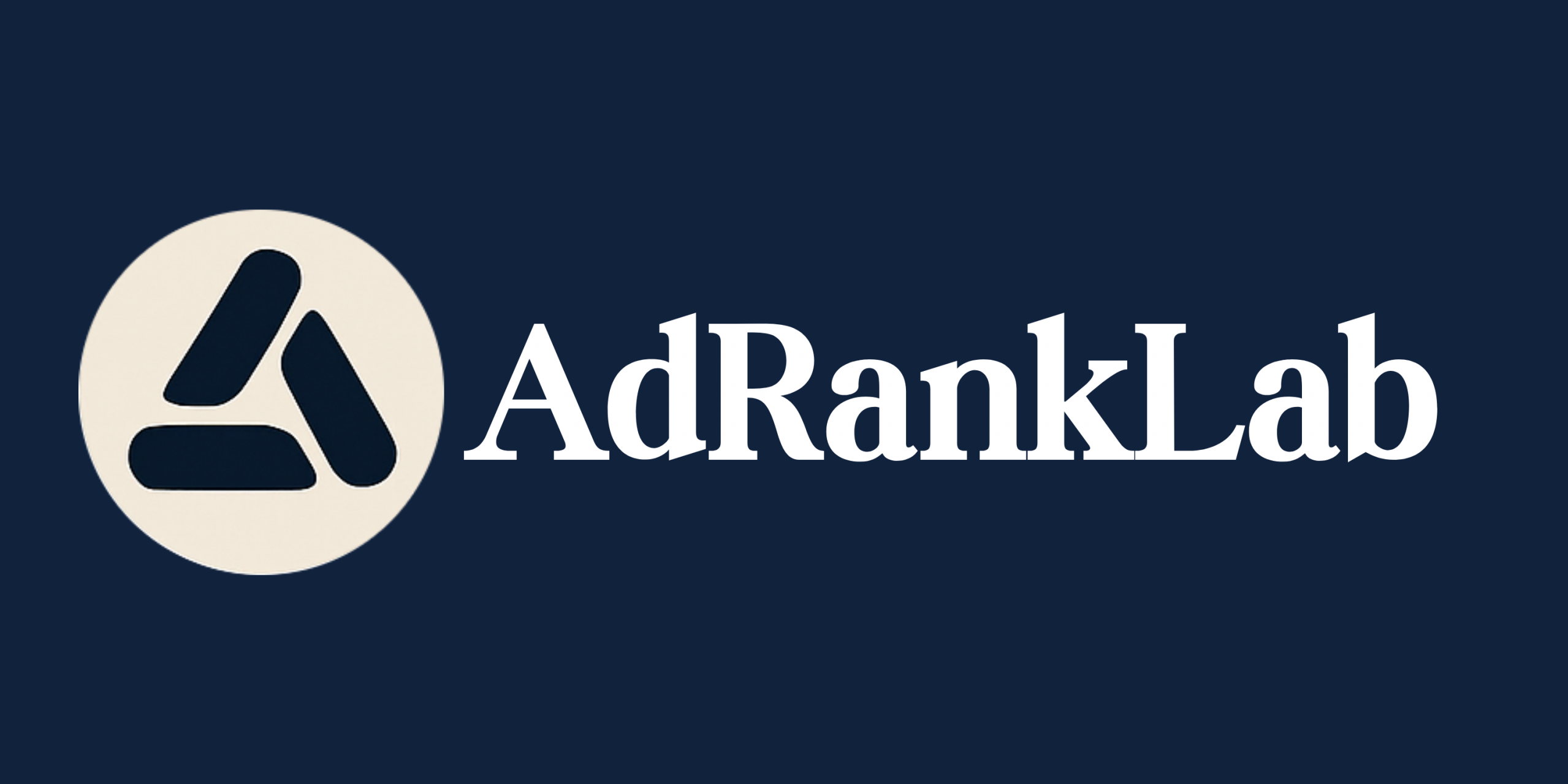Marketing automation in 2025 is no longer optional — it’s essential. As global businesses face rising customer acquisition costs, shorter attention spans, and increased competition, marketing leaders must embrace smarter, scalable, and more precise lead generation strategies. Enter marketing automation: the engine behind enhanced ROI, hyper-personalized campaigns, and AI-powered workflows.
In this blog, we’ll explore:
- What marketing automation is in 2025
- Why it matters more than ever for B2B, SaaS, and eCommerce
- The most effective tools and automation workflows
- AI’s role in lead nurturing, scoring, and real-time engagement
- ROI tracking metrics and real-world ROI boost examples
Let’s dive into how your business can unlock exponential lead generation ROI through marketing automation in 2025.
What Is Marketing Automation in 2025?

Marketing automation refers to the use of technology to manage repetitive marketing tasks and workflows across multiple channels — including email, ads, chatbots, and CRM pipelines — without manual intervention. In 2025, this has evolved with the integration of artificial intelligence (AI), real-time analytics, and omnichannel personalization.
Key Features in 2025:
- Predictive AI for buyer intent and lead scoring
- Omnichannel orchestration across email, SMS, social, and web
- Behavioral triggers for personalized messaging
- Real-time lead engagement powered by automation and AI
- Integration with CRMs like Salesforce and HubSpot for pipeline automation
According to Salesforce’s State of Marketing 2024 report, 76% of marketers say they use automation for more than half of their marketing tasks — a figure expected to exceed 85% by mid-2025.
Why Marketing Automation Matters for Lead Generation ROI
Lead generation is only as good as its ability to convert and retain customers. Manual processes often lead to poor segmentation, slow follow-ups, and lost opportunities. Marketing automation enhances ROI by:
1. Reducing Cost Per Lead (CPL)
- Statista (2024) reports that companies using automation see a 14.5% increase in sales productivity and a 12.2% reduction in marketing overhead.
2. Improving Conversion Rates
- Automated lead scoring and nurturing ensures prospects receive the right message at the right time.
3. Enhancing Personalization at Scale
- AI-driven segmentation and dynamic content improve engagement and trust.
4. Streamlining the Buyer Journey
- Automated CRM pipelines reduce lead leakage and improve handoffs to sales teams.
5. Enabling Real-Time Response
- Speed-to-lead is critical. Automated chatbots and workflows reduce response time from hours to seconds.
Integrations: CRM, Email, Lead Scoring & Chatbots
Automation is most powerful when integrated. Here’s how modern marketing stacks work:
CRM Integration
- Salesforce, HubSpot, and Zoho CRM are commonly connected to marketing automation platforms.
- Data sync enables personalized campaigns, sales alerts, and lifecycle tracking.
Email Automation
- Platforms like ActiveCampaign, Klaviyo, and Marketo send segmented email flows based on user behavior.
- Example: Abandoned cart emails, post-demo follow-ups, lead reactivation series.
Lead Scoring
- Tools like Pardot and HubSpot assign numerical scores based on actions (downloads, visits, opens).
- AI enhancements in 2025 use predictive scoring models for prioritizing high-intent leads.
Chatbots & Conversational Marketing
- Platforms like Drift, Tidio, and ManyChat handle real-time queries and guide leads through automated flows.
- High-converting playbooks include qualification bots, meeting schedulers, and FAQs.
Tools Powering Marketing Automation in 2025
Below is a comparison of leading automation tools:
| Tool | Best For | Notable Features |
|---|---|---|
| HubSpot | All-in-one B2B, SaaS | CRM, workflows, email, scoring |
| Marketo | Enterprise B2B | Deep analytics, personalization, AI scoring |
| ActiveCampaign | SMBs, eCommerce | Email flows, CRM, dynamic content |
| Klaviyo | eCommerce | Shopify/BigCommerce sync, SMS/email flows |
| Pardot (Salesforce) | Enterprise, B2B SaaS | Lead scoring, sales alignment, analytics |
| Zapier | Workflow automation | 6,000+ app integrations |
Real Automation Workflows That Boost ROI
Here are automation workflows delivering proven ROI improvements:
1. Lead Nurturing Sequence
- Trigger: Lead downloads a whitepaper
- Flow: Email 1 (value), Email 2 (case study), Email 3 (CTA to demo)
- Impact: Increases MQL-to-SQL conversion rate by up to 30% (HubSpot, 2024)
2. Abandoned Cart Recovery
- Trigger: Abandoned cart after 30 mins
- Flow: Reminder email + offer email + urgency CTA
- Impact: Boosts recovery rates by 15–20% (Klaviyo, 2024)
3. Event/Webinar Follow-up
- Trigger: Attendee joins a live event
- Flow: Thank-you email → resource pack → meeting invite
- Impact: Increases post-event conversions by 28% (Marketo, 2024)
4. AI Chatbot Lead Qualification
- Trigger: Website visitor on pricing page
- Flow: Qualifies based on budget, timeline, interest
- Impact: Improves lead quality by 40% (Drift Case Study)
Additional Automation Use Cases for Maximizing ROI
5. Re-engagement Campaigns for Cold Leads
- Trigger: Inactive lead for 30+ days
- Flow: Email 1 (Value Reminder), Email 2 (Customer Testimonial), Email 3 (Limited-Time Offer)
- Impact: Re-engages up to 25% of dormant leads, reducing wasted ad spend.
6. Lead Source Attribution Automation
- Trigger: New lead from a campaign channel
- Flow: Auto-tagged based on source (organic, paid, referral)
- Impact: Improves attribution accuracy, enabling better budgeting and ROI optimization.
7. Feedback Collection Flows Post-Sale
- Trigger: Purchase completed
- Flow: Thank-you email → Feedback form → Referral program invite
- Impact: Enhances customer satisfaction and stimulates referrals, creating new organic leads.
8. AI-Driven A/B Testing in Automation
- Tools: AI tests variations in subject lines, images, and CTA placements
- Flow: Automatically routes better-performing version to majority audience
- Impact: Boosts email open rates by up to 26% and click-throughs by 18% (based on Mailchimp Labs, 2024)
Manual vs Automated Lead Nurturing
| Criteria | Manual | Automated |
| Speed | Slow (human follow-up) | Instant (triggers & emails) |
| Personalization | Generic | Dynamic, behavior-based |
| Scalability | Limited | Unlimited |
| Lead Scoring | Subjective | Data-driven & predictive |
| ROI | Inconsistent | Consistently higher |
Manual nurturing drains time and resources. Automated flows free up teams to focus on strategy.
AI’s Role in Lead Capture & Conversion
AI is enhancing every layer of the automation funnel:
1. Predictive Lead Scoring
- AI evaluates behavior, firmographics, and past data to rank leads by conversion likelihood.
2. Dynamic Content Generation
- Tools like Seventh Sense optimize email send times and content based on user preferences.
3. NLP-Powered Chatbots
- Understand and respond naturally to complex queries — boosting on-site engagement.
4. Smart Segmentation
- AI clusters leads by behavior, engagement level, and value potential.
McKinsey’s research shows AI can increase marketing productivity by up to 40%.
5. Intent-Based Ad Personalization
- AI tools analyze behavioral signals to deliver hyper-relevant ads across platforms (Google, LinkedIn, Instagram)
- This drives higher ad engagement and reduces cost-per-click (CPC)
ROI Metrics to Track in Marketing Automation
Here’s what to measure for tracking true ROI:
- Cost Per Lead (CPL)
- Customer Acquisition Cost (CAC)
- Lead-to-MQL Conversion Rate
- Time-to-Conversion
- Email Open and Click Rates
- Sales Qualified Leads (SQLs)
- Return on Marketing Investment (ROMI)
Example Calculation:
If automation reduces CPL from $60 to $40 and boosts conversion rate from 10% to 20%, your ROI improves by over 100%.
Step-by-Step Strategy to Boost Lead Gen ROI with Automation
- Audit Current Lead Gen Channels
- Map Your Customer Journey
- Select the Right Tools (based on team size, industry, goals)
- Build Segmented Automation Flows
- Integrate CRM + Lead Scoring Models
- Test and Optimize Continuously
- Measure ROI Monthly
Pro Tips for Success
- Use multi-touch attribution to avoid channel bias.
- Start with one high-impact flow before scaling.
- Sync sales and marketing teams via shared KPIs.
- Clean your contact database quarterly.
- Never automate without a strategy — it’s not “set and forget.”
- Always A/B test your automation sequences for maximum performance.
- Educate your sales team about automation handoff points to improve closure rates.
Challenges to Avoid
- Over-automation leading to robotic communication
- Poor tool integration causing data silos
- Lack of alignment between sales and marketing
- Ignoring compliance (GDPR, CAN-SPAM)
- Not segmenting leads effectively
- Relying solely on email — diversify channels for maximum reach
FAQs
Q1. Is marketing automation only for large enterprises?
No. Tools like ActiveCampaign, Klaviyo, and MailerLite are designed for SMBs and startups.
Q2. How long does it take to see ROI from automation?
Typically 3–6 months, depending on your sales cycle and volume.
Q3. Can I integrate automation with paid ads?
Yes. Automation tools can sync with Google Ads, LinkedIn, Meta, etc., for retargeting and lead tracking.
Q4. How do I choose the right automation platform?
Evaluate based on team size, sales model, budget, and tech stack compatibility.
Conclusion: Partner With AdRankLab for Marketing Automation Success
In 2025, marketing automation is the key to predictable, scalable, and cost-effective lead generation. When implemented with the right tools, strategy, and AI enhancements, it can double your lead generation ROI and position your brand for sustainable growth.
At AdRankLab, we specialize in designing custom automation frameworks that drive measurable results. From tool selection to workflow design, our experts ensure every element aligns with your growth objectives.
Let’s unlock the power of automation together. Contact us today.


